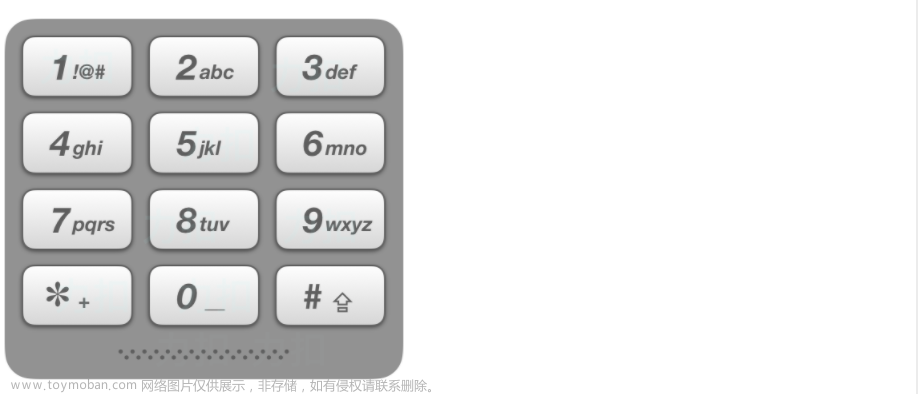目录
1--用栈实现队列
2--用队列实现栈
3--有效的括号
4--删除字符串中的所有相邻重复项
5--逆波兰表达式求值
6--滑动窗口的最大值
7--前k个高频元素
1--用栈实现队列

利用两个栈,一个是输入栈,另一个是输出栈;
#include <iostream>
#include <stack>
class MyQueue {
public:
MyQueue() {}
void push(int x) {
in_stk.push(x);
}
int pop() {
if(out_stk.empty()){
while(!in_stk.empty()){
out_stk.push(in_stk.top());
in_stk.pop();
}
}
int tmp = out_stk.top();
out_stk.pop();
return tmp;
}
int peek() {
if(out_stk.empty()){
while(!in_stk.empty()){
out_stk.push(in_stk.top());
in_stk.pop();
}
}
return out_stk.top();
}
bool empty() {
if(out_stk.empty() && in_stk.empty()) return true;
else return false;
}
private:
std::stack<int> in_stk, out_stk;
};
int main(int argc, char* argv[]){
MyQueue Queue;
Queue.push(1);
Queue.push(2);
Queue.push(3);
std::cout << Queue.pop() << std::endl;
std::cout << Queue.peek() << std::endl;
return 0;
}2--用队列实现栈

主要思路:文章来源:https://www.toymoban.com/news/detail-690180.html
弹出栈顶元素时,需要将队列前 size - 1 个元素先弹出再重新加入到队列中;
#include <iostream>
#include <queue>
class MyStack {
public:
MyStack() {}
void push(int x) {
q.push(x);
}
int pop() {
int size = q.size();
for(int i = 1; i <= size - 1; i++){
q.push(q.front());
q.pop();
}
int tmp = q.front();
q.pop();
return tmp;
}
int top() {
int size = q.size();
for(int i = 1; i <= size - 1; i++){
q.push(q.front());
q.pop();
}
int tmp = q.front();
q.pop();
q.push(tmp);
return tmp;
}
bool empty() {
return q.empty();
}
private:
std::queue<int> q;
};
int main(int argc, char* argv[]){
MyStack stk;
stk.push(1);
stk.push(2);
stk.push(3);
std::cout << stk.pop() << std::endl;
std::cout << stk.top() << std::endl;
return 0;
}3--有效的括号

主要思路:
基于栈,遇到左括号,入栈对应的右括号。遇到右括号,判断当前栈顶元素是否与右括号相等,相等则表示之前曾遇到对应的左括号,表明匹配成功并弹出栈顶元素,否则返回 false;
最后判断栈是否为空,即是否有未匹配的左括号;
#include <iostream>
#include <stack>
#include <string>
class Solution {
public:
bool isValid(std::string s) {
std::stack<char> stk;
for(int i = 0; i < s.length(); i++){
if(s[i] == '(') stk.push(')');
else if(s[i] == '[') stk.push(']');
else if(s[i] == '{') stk.push('}');
else{
if(stk.empty()) return false;
else if(stk.top() != s[i]) return false;
else stk.pop(); // 匹配
}
}
return stk.empty();
}
};
int main(int argc, char* argv[]){
std::string test = "()[]{}";
Solution S1;
bool res = S1.isValid(test);
if(res) std::cout << "true" << std::endl;
else std::cout << "false" << std::endl;
return 0;
}4--删除字符串中的所有相邻重复项

主要思路:
基于栈,遍历字符串,判断当前字符与栈顶元素是否相同,相同则弹出栈顶元素,否则入栈;
最后遍历栈,将栈内的元素重构为字符串,需注意顺序;
#include <iostream>
#include <stack>
#include <string>
class Solution {
public:
std::string removeDuplicates(std::string s) {
std::stack<char> stk;
for(int i = 0; i < s.length(); i++){
if(stk.empty() || stk.top() != s[i]){
stk.push(s[i]);
}
else{ // s[i] == stk.top()
stk.pop();
}
}
std::string res;
while(!stk.empty()){
res = stk.top() + res;
stk.pop();
}
return res;
}
};
int main(int argc, char* argv[]){
std::string test = "abbaca";
Solution S1;
std::string res = S1.removeDuplicates(test);
std::cout << res << std::endl;
return 0;
}5--逆波兰表达式求值

主要思路:
基于栈,遍历字符串数组,当遇到数字时将数字压入栈中,当遇到运算符时,将栈顶的两个元素取出来进行运算,并将运算结果重新压入栈中;
需注意运算顺序,即第二个出栈的 num2 作为运算符的左侧元素;
#include <iostream>
#include <vector>
#include <stack>
#include <string>
class Solution {
public:
int evalRPN(std::vector<std::string>& tokens) {
std::stack<int> stk;
for(int i = 0; i < tokens.size(); i++){
if(tokens[i] != "+" && tokens[i] != "-" && tokens[i] != "*" && tokens[i] != "/"){
stk.push(std::stoi(tokens[i]));
continue;
}
int num1 = stk.top();
stk.pop();
int num2 = stk.top();
stk.pop();
if(tokens[i] == "+"){
int num3 = num2 + num1;
stk.push(num3);
continue;
}
else if(tokens[i] == "-"){
int num3 = num2 - num1;
stk.push(num3);
continue;
}
else if(tokens[i] == "*"){
int num3 = num2 * num1;
stk.push(num3);
continue;
}
else{
int num3 = num2 / num1;
stk.push(num3);
continue;
}
}
return stk.top();
}
};
int main(int argc, char* argv[]){
// tokens = ["2","1","+","3","*"]
std::vector<std::string> test = {"2", "1", "+", "3", "*"};
Solution S1;
int res = S1.evalRPN(test);
std::cout << res << std::endl;
return 0;
}6--滑动窗口的最大值

主要思路:
维护一个双端队列,队列里的元素存储的是可能成为最大值的元素,对于当前滑动窗口,其最大值为队头元素;
当移动滑动窗口时,需要判断当前移出窗口的元素是否是队头元素,如果是则需先将队头元素弹出(因为该元素已经离开了滑动窗口,相当于失效);
之前本题的解法是存储元素的索引(之前的解法),这样可以避免重复元素的出现;但现在本题的解法是存储元素,所以一个细节是需要避免错误移除重复元素的问题,具体可以推导例子:[-7,-8,7,5,7,1,6,0];
#include <iostream>
#include <vector>
#include <queue>
class Solution {
public:
std::vector<int> maxSlidingWindow(std::vector<int>& nums, int k) {
std::deque<int> q; // 存储可能成为最大值的元素
std::vector<int> res;
// 初始化第一个滑动窗口
for(int i = 0; i < k; i++){
// 不能取等于号的原因是可能会出现相等的数,例如下例
// [-7,-8,7,5,7,1,6,0] 出现了两个7,取=号会误弹出第2个7
while(!q.empty() && q.back() < nums[i]){
q.pop_back();
}
q.push_back(nums[i]);
}
res.push_back(q.front());
// 遍历更新
for(int i = k; i < nums.size(); i++){
// 移除滑动窗口左边界的元素
if(nums[i-k] == q.front()) q.pop_front();
// 把不可能成为最大值的元素从队列中移出
while(!q.empty() && q.back() < nums[i]){
q.pop_back();
}
q.push_back(nums[i]);
res.push_back(q.front()); // 记录当前滑动窗口的最大值
}
return res;
}
};
int main(int argc, char* argv[]){
std::vector<int> test = {1, 3, -1, -3, 5, 3, 6, 7};
int k = 3;
Solution S1;
std::vector<int> res = S1.maxSlidingWindow(test, k);
for(auto v : res) std::cout << v << " ";
std::cout << std::endl;
return 0;
}7--前k个高频元素

主要思路:
维护一个优先队列(小顶堆),里面存储 k 个元素及其出现的次数;文章来源地址https://www.toymoban.com/news/detail-690180.html
#include <iostream>
#include <vector>
#include <map>
#include <queue>
class Solution {
public:
std::vector<int> topKFrequent(std::vector<int>& nums, int k) {
std::map<int, int> m;
for(int i = 0; i < nums.size(); i++){
m[nums[i]] += 1;
}
// 小顶堆
std::priority_queue<std::pair<int, int>, std::vector<std::pair<int, int>>, mycompare> pri_q;
for(auto it = m.begin(); it != m.end(); it++){
pri_q.emplace(*it);
if(pri_q.size() > k) pri_q.pop(); // 始终维护 k 个 pair 对
}
// 倒叙输出k个高频元素
std::vector<int> res(pri_q.size(), 0);
for(int i = pri_q.size() - 1; i>=0; i--){
res[i] = pri_q.top().first;
pri_q.pop();
}
return res;
}
class mycompare{
public:
bool operator()(std::pair<int, int>& item1, std::pair<int, int>& item2){
return item1.second > item2.second;
}
};
};
int main(int argc, char* argv[]){
// nums = [1,1,1,2,2,3], k = 2
std::vector<int> test = {1, 1, 1, 2, 2, 3};
int k = 2;
Solution S1;
std::vector<int> res = S1.topKFrequent(test, k);
for(auto item : res) std::cout << item << " ";
std::cout << std::endl;
return 0;
}到了这里,关于代码随想录笔记--栈与队列篇的文章就介绍完了。如果您还想了解更多内容,请在右上角搜索TOY模板网以前的文章或继续浏览下面的相关文章,希望大家以后多多支持TOY模板网!












